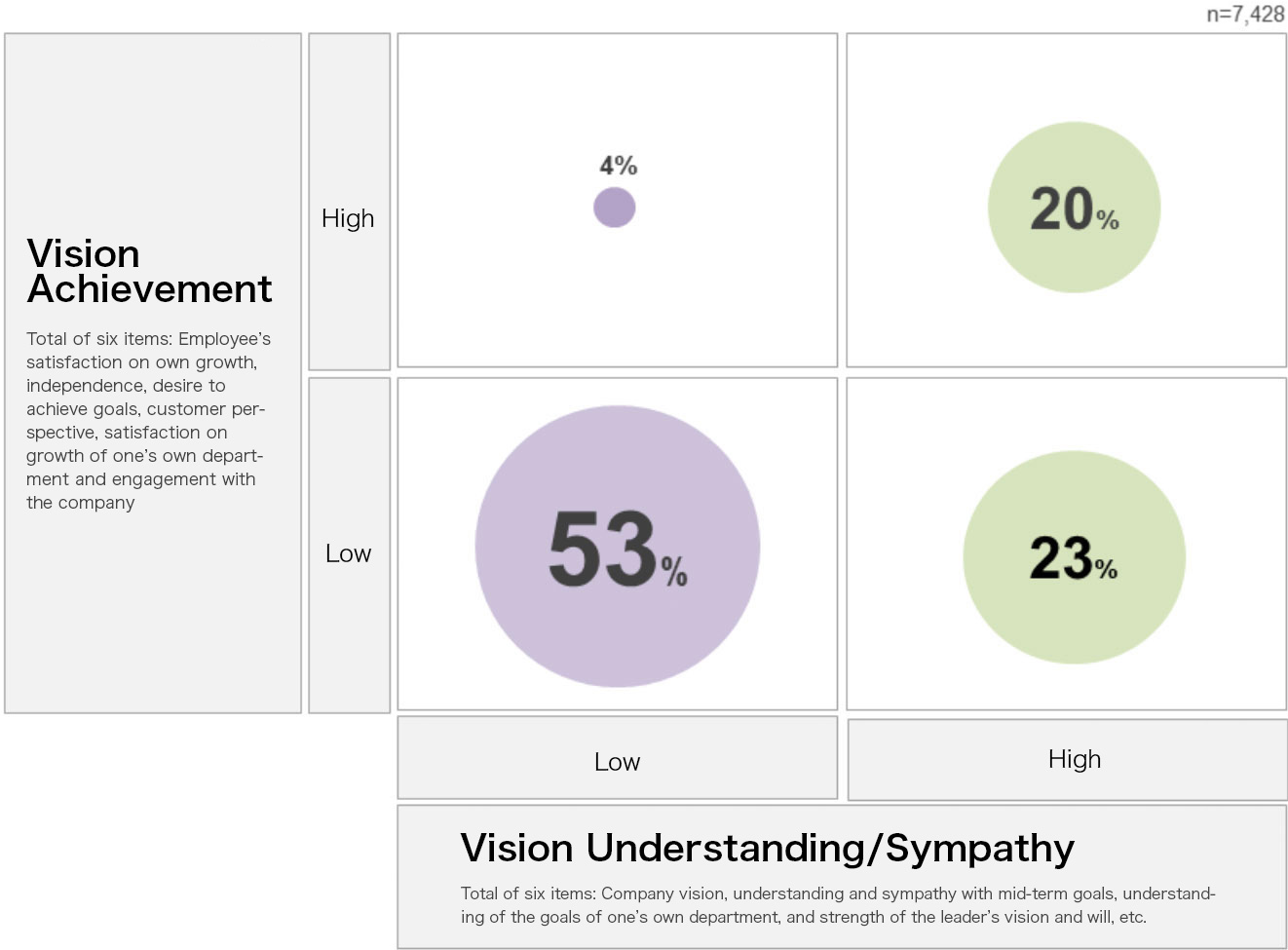Coach's VIEW is a business column authored by executive coaches in COACH A, aimed at providing valuable insights and effective approaches for leveraging coaching to foster organizational and leadership development. The column draws on the latest coaching trends and data, as well as insights from notable global publications on coaching.
What Makes My Subordinates Work Proactively Along With Company's Vision?

There is a saying in Africa: "If you want to go fast, go alone. If you want to go far, go together with many people."
"Going together" means to aim toward achieving something that you cannot do alone, but with the cooperation of many people.
You need an attractive destination when you want the cooperation of many people. In addition, the leader will need to describe that destination to everyone in an easy-to-understand manner.
Let's liken this to corporate management: the president let the employees understand and sympathize with the company's vision to ensure they take action toward achieving it.
This is one of the major themes for management.
"My employees sympathize with the company's vision, but aren't working proactively as I expect"
Mr. M, the Asian representative of a certain manufacturer, leads several thousand employees. He is a leader who spent a lot of time on coaching in regards to his company's vision.
Mr. M's company has operated with its vision for many years. It was also very important for Mr. M personally to ensure the company's vision in Asian countries - regardless of whether those employees were Japanese expatriates or local workers.
One time, Mr. M said the following in a session: "I am very good at explaining our vision, mission and values in an easy-to-understand manner and ensuring my subordinates understand them. However, recently, I have been frustrated. I think they should be working harder if they understand the company's vision."
Certainly, understanding and sympathy of employees toward the company's vision scored highly in several organizational surveys conducted within Mr. M's organization.
Employees scored highly in terms of engagement and loyalty compared to other companies. The free comments section also showed several instances of employees writing things like the following: "I want to help the company to grow." "I feel proud to be an employee of this company."
Even so, Mr. M was not satisfied with what he actually felt from his employees on a daily basis: "If you believe you sympathize with the company's vision, wouldn't it better to work even more proactively? Why aren't my employees working harder?"
What is the gap between understanding/sympathy and action?
While listening to Mr. M, I recalled Coaching Research Institute (CRI) results.
There is a survey called "Executive Mindset Inventory" on top management in organizations - the so-called CXO class.
This survey compared the understanding/sympathy with vision of companies and actions taken to realize those visions of employees by score from a variety of data given by management. We learned the following from the results.
- It is extremely difficult to achieve a company's vision in an organization that has a low level of understanding/sympathy with the vision.
- Even though there is a high level of understanding/sympathy with a company's vision, it does not necessarily mean that the organization is working toward achieving it.
Percentage of people by score of vision understanding/sympathy and vision achievement
Although the employees in Mr. M's organization had a high level of understanding/sympathy with the company's vision, they had a low level of action toward achieving it (lower right area).
What will form the bridge between understanding/sympathy with the company's vision and ensuring that the organization heads toward the phase of achieving it?
I remembered that there was the item with a relatively low score in the organizational research of Mr. M's company - "Interest in customers".
Accordingly, we analyzed what is different between employees who only understand/sympathize with the company's vision (A) and employees who actually take action to achieve the company's vision (B) in the Coaching Research Institute.
The figure below shows the results of this analysis.
[Survey details: Executive Mindset Inventory - seven-grade evaluation with an evaluation period from September 2011 to February 2019]
Survey by the Coaching Research Institute in 2019
The biggest difference emerged in the state of leaders whether they ensure their employees to look at the relationship between those inside and outside of their company with the following elements.
- Interest in competitors
- Tolerance as an organization to accept new things without sticking rigidly to the principle of self-sufficiency
- Flexibility and spirit of challenge without sticking rigidly to past success stories and conventional ways of doing things
Of course, this does not tell us which comes first between the state of leaders or leaders' actions toward achieving the company's vision. Nevertheless, what happened in Mr. M's organization was similar to these results.
Justin Wasserman, who is known for his research on leadership theory and change management theory, has stated the following in regards to the leaders that companies should develop.
"The most important leadership capability that should be developed in companies all over the world in the 21st century is the ability to create a state in which at least 50% of employees have mercilessly established targets for success and have decided to make progress on these every day while looking outside of company with an extraordinary sense of crisis.*"
Given that, what are the abilities, way of doing things and relationships with employees possessed by leaders who can ensure that their employees look "outside of company".
What is the key to be a good group as told by Asia's number one beautician?
The other day, I had the opportunity to talk with Mr. F, the beautician who took first place at a worldwide contest in Asia.
The salon to which Mr. F belongs first started managing a store in a small town in Kansai 30 years ago. The number of stores in this company has been increasing while it has kept as a group that worked hard together while each individual aimed to be professionals seeking true beauty.
Mr. F is now serving as the leader of a new store with about 70 beauticians. I asked him what the key was to continue being a good group.
"It is very important to keep connections between members of staff and former employees through techniques in our work. In other words, we promise to improve our techniques through mutual intent and duty. However, nothing is achieved just by talking to each other. Accordingly, everyone participates in global level contests. This allows us to learn what our position is in the world and ensures we keep on improving our techniques. Trends changes in a flash, so I also keep entering such contests."
This salon looks for all staff members to widen their respective fields by entering hair shows, serving as seminar lecturers and developing beauty drugs in addition to contests.
There are various ways to ensure that the awareness of your employees faces outward. "Outward" here may mean customers, competitors, society, countries or adjacent departments.
You should ensure your company faces even further outward.
What method will you take to ensure that the awareness of your members is facing outward? How will you give your own awareness toward facing outward?
*Regardless of profit, non-profit or intranet, secondary use such as copying, diversion, selling etc. is prohibited without permission.
Language: Japanese



